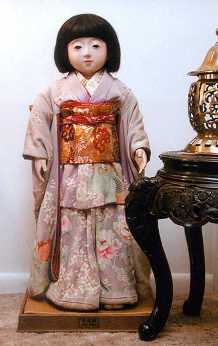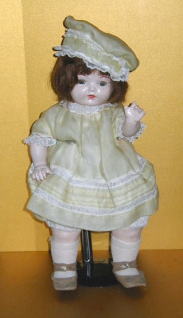|
Last Update: December 15, 2023 |
|
1927 Doll Exchange
Japanese Friendship Dolls American Blue-eyed Dolls Mass Media / Books / Films Letters Other Friendship Doll Programs Teachers' Corner |
|
Children's Page
Links Recent Changes Friendship Visits Acknowledgments Site Map |
Friendship Dolls
Their "mission of
friendship" continues
|
|

|
|
|
Miss Miyagi |
|
"These dolls silently but eloquently tell you of the friendly feelings that the children of Japan have for the children of America." |
|
This web site tells the story of the Friendship Doll exchange between Japan and the United States in 1927. More importantly, these Friendship Dolls continue to play an important role in promoting understanding, peace, and friendship between children and adults in the two countries.
American and Japanese children still receive Friendship Dolls from their overseas friends. These dolls delight children and give them a better understanding of the culture in another country across the Pacific Ocean.
The Internet makes it easier for the Friendship Dolls to spread their message of goodwill. For example, many Japanese elementary schools feature the Blue-eyed Dolls sent from America in 1927 on their Internet home pages.
Of course, different languages make it difficult for children in Japan and the US to communicate directly with each other. This web site provides some translations of information on Japanese web sites, so hopefully this will help American children better understand their Japanese friends. The Individual Dolls page in the American Blue-eyed Dolls section provides links to much information published by Japanese schools.
A good overview of the Friendship Doll story can be found in the following two articles:
- A Gift of Friendship - originally published in American Girl magazine
- The Friendship Dolls - originally published in Look Japan magazine
|
"May the United States of America and Japan always stay friends." |
|

|
|
| Mary |
|
If you are trying to find some specific information about the Friendship Dolls, please try one of the following search methods:
- Menus to link you to other sections of the
site can be found on the left-hand side or bottom of most pages.
- The Site Map lists
the topics of each of the eight major sections of the web site.
- If you know the author or location, the Acknowledgments
page provides many links directly to the information.
- If the information has been added to the site
recently, you may be able to find it on the Recent
Changes page.
-
Contact me (Bill Gordon) directly at wgordon@wesleyan.edu
with your questions.
If you have any material and information you would like to add to this web site, please contact me. I consider this web site to be the collaborative effort of many people. Especially welcome are children's letters, children's essays, photos, articles, and new links. Either English or Japanese is OK.
The history of the Friendship Dolls has no ending. Japanese and American children continue to write the story of the Friendship Dolls. Please be a part of the story!